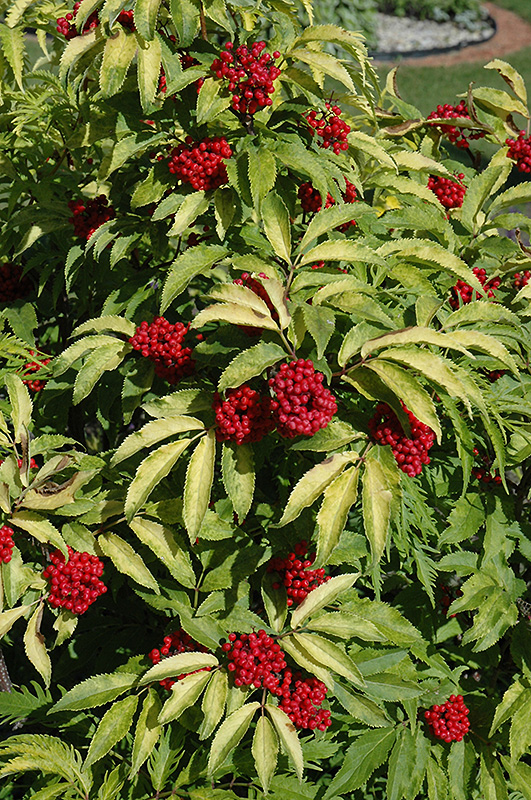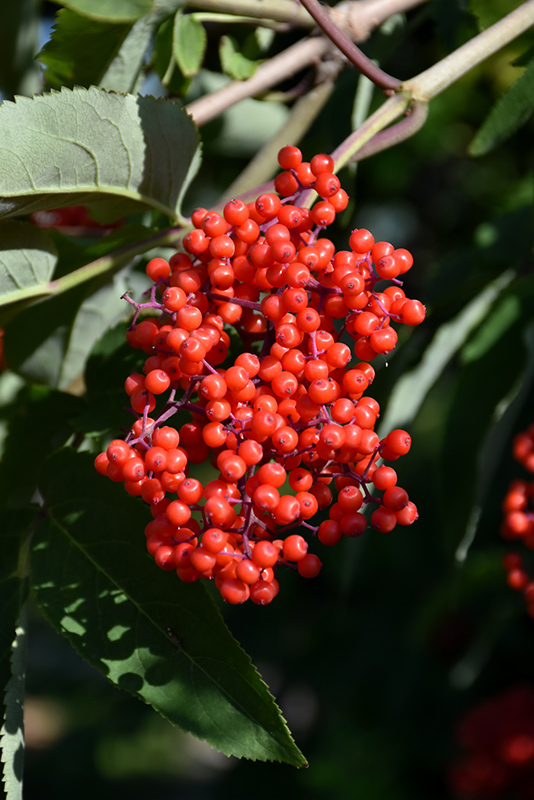Height: 10 feet
Spread: 8 feet
Sunlight:
![]()
![]()
Hardiness Zone: 2a
Other Names: Red Elder
Description:
A tough and vigorous garden shrub valued for its showy creamy white flowers in spring and bright red berries which are favorites of the birds; bushy upright habit, somewhat leggy and can be rather coarse in winter, however very adaptable
Ornamental Features
Red-Berried Elder features showy clusters of lightly-scented creamy white flowers held atop the branches in mid spring. The red fruits are held in abundance in spectacular clusters from mid fall to early winter. It has dark green deciduous foliage. The compound leaves turn yellow in fall.
Landscape Attributes
Red-Berried Elder is a multi-stemmed deciduous shrub with an upright spreading habit of growth. Its relatively coarse texture can be used to stand it apart from other landscape plants with finer foliage.
This shrub will require occasional maintenance and upkeep, and is best pruned in late winter once the threat of extreme cold has passed. It is a good choice for attracting birds, bees and butterflies to your yard. It has no significant negative characteristics.
Red-Berried Elder is recommended for the following landscape applications;
- Mass Planting
- Hedges/Screening
- General Garden Use
- Naturalizing And Woodland Gardens
Planting & Growing
Red-Berried Elder will grow to be about 10 feet tall at maturity, with a spread of 8 feet. It tends to be a little leggy, with a typical clearance of 2 feet from the ground, and is suitable for planting under power lines. It grows at a fast rate, and under ideal conditions can be expected to live for approximately 30 years.
This shrub does best in full sun to partial shade. It is very adaptable to both dry and moist locations, and should do just fine under average home landscape conditions. It is not particular as to soil type or pH. It is highly tolerant of urban pollution and will even thrive in inner city environments. This species is native to parts of our region.

